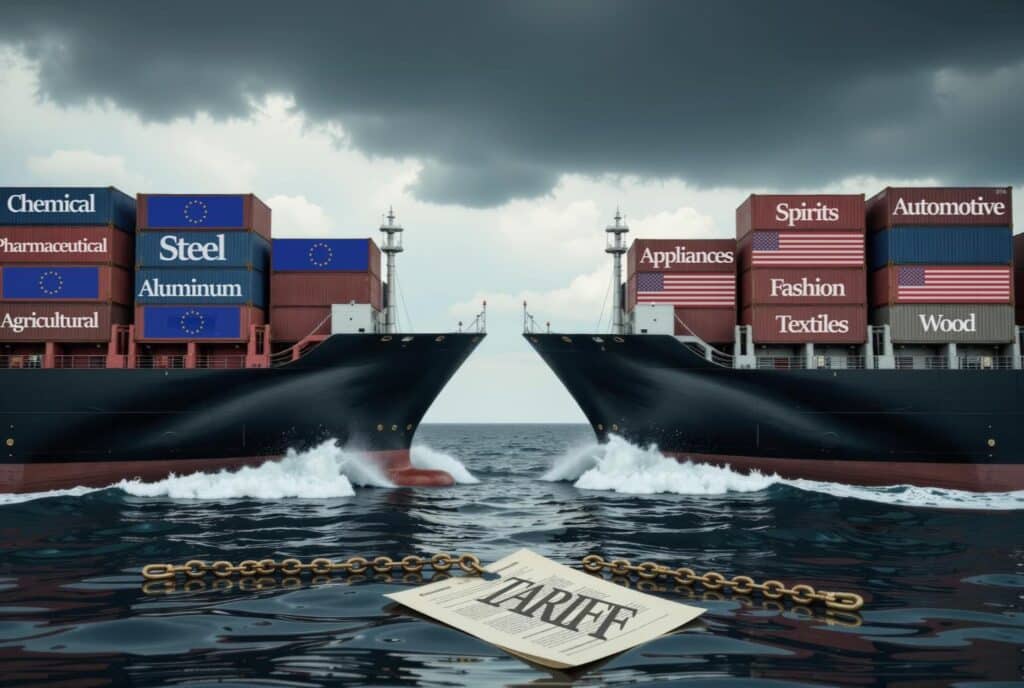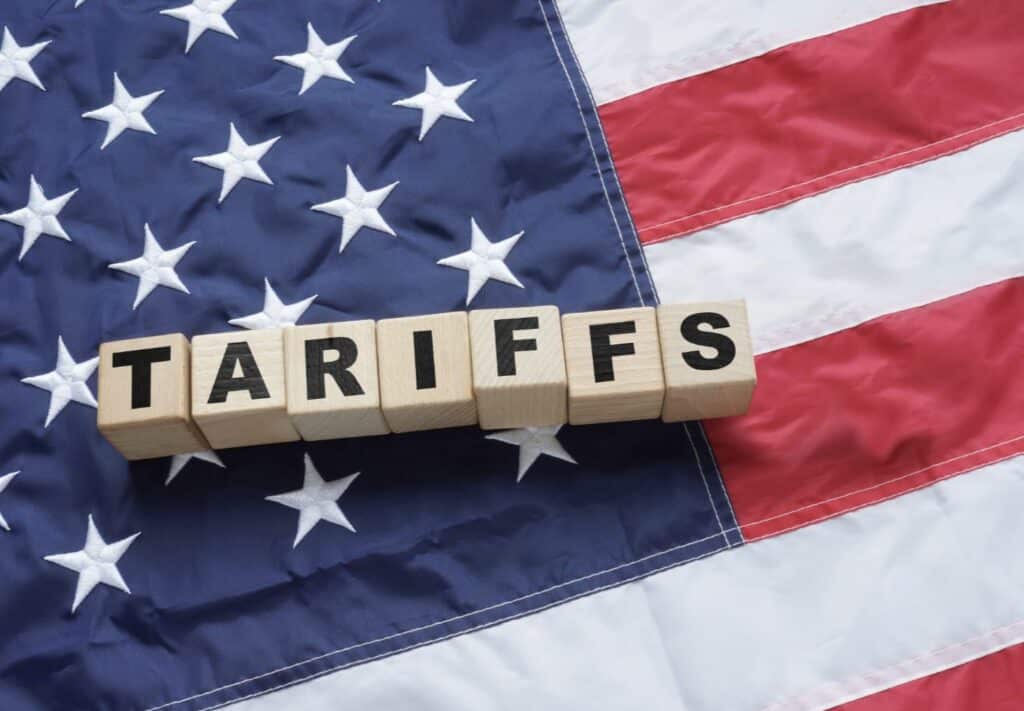Tariffs have long been used as a tool to regulate trade and protect domestic industries, but their impact on businesses is far from uniform. While large corporations often have the financial resources and infrastructure to absorb tariff-related costs, small and medium enterprises (SMEs) face much greater challenges. SMEs are the backbone of many economies, including the United States. Yet, they are disproportionately affected by tariffs, which limit their ability to compete globally and threaten their long-term viability.
Read on as we explore how tariffs hurt SMEs, explaining why they struggle to adapt to rising costs and how this impacts the broader economy. And examine the vicious cycle of higher prices, reduced sales, and economic inefficiency that tariffs create, ultimately making them a damaging solution for global trade challenges.
Table of Contents
- What Are Tariffs and How Do They Work?
- The Vicious Cycle of Tariffs and Rising Costs
- The Impact on the U.S. Economy
- Why Tariffs Are Not the Solution
- A Better Way Forward
- Related Content
What Are Tariffs and How Do They Work?

Tariffs are taxes imposed on imported goods by a government. Their primary purpose is to make foreign products more expensive, encouraging consumers to buy domestically produced goods.
While this may seem like a straightforward way to protect local industries, tariffs often create unintended consequences that harm both businesses and consumers.
For SMEs, the impact of tariffs is particularly pronounced. Unlike large corporations, which often have reserves and resources to weather the financial strain of tariffs, SMEs operate on much tighter margins. This makes it difficult for them to absorb the additional costs or adapt their business models to offset the impact.
Why Tariffs Disproportionately Hurt SMEs
Limited Financial Reserves
Large corporations typically have substantial financial reserves and access to capital, enabling them to absorb tariff-related costs or invest in alternative strategies, such as relocating production or sourcing from other countries.
SMEs, on the other hand, often operate with limited cash flow and smaller profit margins. When tariffs increase the cost of imported goods, SMEs are forced to make difficult decisions that can jeopardize their survival.
Higher Costs of Imported Goods
SMEs that rely on imported goods—whether raw materials, components, or finished products—are directly affected by tariffs. These additional costs can quickly add up, especially for businesses that already operate on tight budgets.
For example, a small furniture manufacturer that imports wood or metal from overseas faces higher costs due to tariffs. Unlike larger competitors, the SME may not have the resources to negotiate better deals or find alternative suppliers.
Passing Costs to Consumers
When faced with rising costs due to tariffs, SMEs have two main options: they can absorb the additional expenses or pass them on to consumers. Absorbing the costs may help maintain sales, but it reduces profitability, which is unsustainable in the long term.
Passing the costs on to consumers, however, often leads to higher prices, reduced demand, and lower sales. For SMEs, this creates a lose-lose situation that limits their ability to grow and compete.
Difficulty in Adapting Supply Chains
Large corporations often have the resources and expertise to adapt their supply chains in response to tariffs, such as shifting production to countries with lower tariffs or sourcing materials locally. SMEs, however, lack the flexibility and infrastructure to make such changes.
Manufacturing and sourcing are complex processes that require access to raw materials, skilled labor, and technology, all of which may not be readily available in alternative locations. For SMEs, the cost and time involved in adapting supply chains can be prohibitive.
The Vicious Cycle of Tariffs and Rising Costs

Tariffs create a vicious cycle that disproportionately impacts SMEs and harms the broader economy. Here’s how the cycle works:
Tariffs Raise Costs for SMEs
When tariffs are imposed on imported goods, SMEs that rely on these goods face higher costs. This could include raw materials, components, or finished products that are essential to their business.
SMEs Pass Costs to Consumers
To stay afloat, many SMEs are forced to pass these additional costs on to consumers by raising prices. This makes their products less affordable, reducing demand.
Reduced Sales and Profitability
Higher prices lead to reduced sales, as consumers either cut back on spending or switch to cheaper alternatives. For SMEs, this results in lower revenue and profitability, making it even harder to absorb tariff-related costs.
Economic Inefficiency
As SMEs struggle to adapt, the broader economy suffers as a result. Reduced competitiveness, lower consumer spending, and slower economic growth are all consequences of tariffs that ultimately harm everyone, from small businesses to consumers to the government.
This cycle demonstrates why tariffs are not a viable solution for addressing global trade challenges. Instead of protecting domestic industries, they create inefficiencies and reduce economic growth, particularly for SMEs.
The Impact on the U.S. Economy

SMEs play a crucial role in the U.S. economy, accounting for nearly half of private-sector employment and making a significant contribution to GDP. However, tariffs threaten their ability to thrive and compete. Here’s how:
Higher Prices Across the Board
When tariffs are imposed on goods from multiple countries, the result is higher prices for a wide range of products. SMEs that rely on imported goods have little choice but to raise prices, making their products less competitive both domestically and internationally.
Reduced Global Competitiveness
Tariffs make it harder for U.S. SMEs to compete in global markets. Higher production costs mean that American-made products are often priced higher than those produced in countries without tariffs. This puts U.S. SMEs at a disadvantage, limiting their ability to expand and grow.
Stifled Innovation
SMEs are often drivers of innovation, bringing new ideas and products to market. However, tariffs reduce their ability to invest in research and development, as resources are diverted to cover higher costs. This stifles innovation and limits economic growth.
Job Losses
As SMEs struggle to adapt to rising costs and declining sales, many are forced to lay off employees or close their doors entirely. This has a ripple effect on the economy, resulting in reduced employment and consumer spending.
Why Tariffs Are Not the Solution

Proponents of tariffs often argue that they protect domestic industries and create jobs, but the reality is far different. Tariffs raise costs, reduce competitiveness, and create inefficiencies that harm businesses and consumers alike. For SMEs, the impact is particularly severe, as they lack the resources to adapt to these challenges.
Here’s why tariffs are not the solution:
Tariffs Raise Costs, Not Lower Them
Tariffs are designed to make imported goods more expensive, but this doesn’t lower costs for domestic businesses or consumers. Instead, it raises costs across the board, creating a burden that disproportionately affects SMEs.
Tariffs Don’t Address the Root Causes of Trade Imbalances
Trade imbalances are often the result of complex factors, such as differences in labor costs, technology, and infrastructure. Tariffs don’t address these root causes and instead create new challenges that harm businesses and the economy.
Tariffs Create Inefficiencies
By disrupting supply chains and raising costs, tariffs create inefficiencies that reduce economic growth and competitiveness. For SMEs, this means higher prices, lower sales, and reduced profitability.
A Better Way Forward
Rather than relying on tariffs, governments and businesses should explore alternative strategies to support SMEs and address global trade challenges. These include:
Investing in Innovation
Supporting research and development can help SMEs create higher-quality products and improve manufacturing processes, making them more competitive in global markets.
Negotiating Trade Agreements
Trade agreements that reduce barriers and promote cooperation can create a more stable and predictable global trade environment, benefiting SMEs and the broader economy.
Providing Support for SMEs
Governments can provide financial support, training, and resources to help SMEs adapt to global trade challenges and compete more effectively.
Tariffs are often presented as a solution to global trade challenges, but their impact on SMEs tells a different story.
By raising costs, reducing competitiveness, and creating inefficiencies, tariffs disproportionately hurt small and medium enterprises, limiting their ability to thrive and compete. For the U.S. economy, this means higher prices, reduced innovation, and slower economic growth—outcomes that benefit no one.
Instead of relying on tariffs, policymakers should focus on strategies that support SMEs, foster innovation, and promote cooperation in global trade. Only by addressing the complexities of global trade can we create a more prosperous and interconnected world.
Find out more about how Mondoro can help you create, develop, and manufacture excellent home decor and furniture products – don’t hesitate to contact me, Anita. Check out my email by clicking here or become a part of our community and join our newsletter by clicking here.
Mondoro gives out a FREE Lookbook to anyone interested. You can receive a copy of our latest Lookbook by clicking here.
Listen to our Podcast called Global Trade Gal. You can find it on all major podcast platforms. Try out listening to one of our podcasts by clicking here.
Subscribe to our Mondoro Company Limited YouTube Channel with great videos and information by clicking here.
Related Content
What Is Natural Rattan Material Made Of?
Originating from the dense tropical rainforests, rattan is more than a material for your favorite wicker chair or basket. Read on as we guide you through the intricate journey of rattan, from its origins in the Calamoideae subfamily of the palm family to the craftsmanship involved in converting it into an array of beautiful and functional items. Join us as we unravel the secrets of natural rattan, and explore how it compares to its synthetic counterpart.
You can discover more by reading What Is Natural Rattan Material Made Of? by clicking here.
The Charm Of Peel Rattan Home Decor Accessories And Furniture
In a world where technology seems to permeate every aspect of our lives, there’s something inherently special about owning a piece of furniture or decor that’s been lovingly crafted by hand.
That is why we love the peel rattan or the rattan handwoven look. No matter how much industry has advanced, some things must be made by hand or have a human touch. Handwoven Peel rattan products are one such product. Read on as we explore peel rattan and why we love the material.
You can learn more by reading The Charm Of Peel Rattan Home Decor Accessories And Furniture by clicking here.
What Is The Difference Between Rattan, Wicker, And Cane Furniture?
Rattan is a type of palm or vine that grows in the jungles of Southeast Asia. Rattan refers to a kind of natural material. Wicker is a type of weave using rattan materials. Cane also refers to a type of weave that is usually woven using rattan material.
You can learn more by reading our blog What Is The Difference Between Rattan, Wicker, And Cane Furniture? by clicking here.

